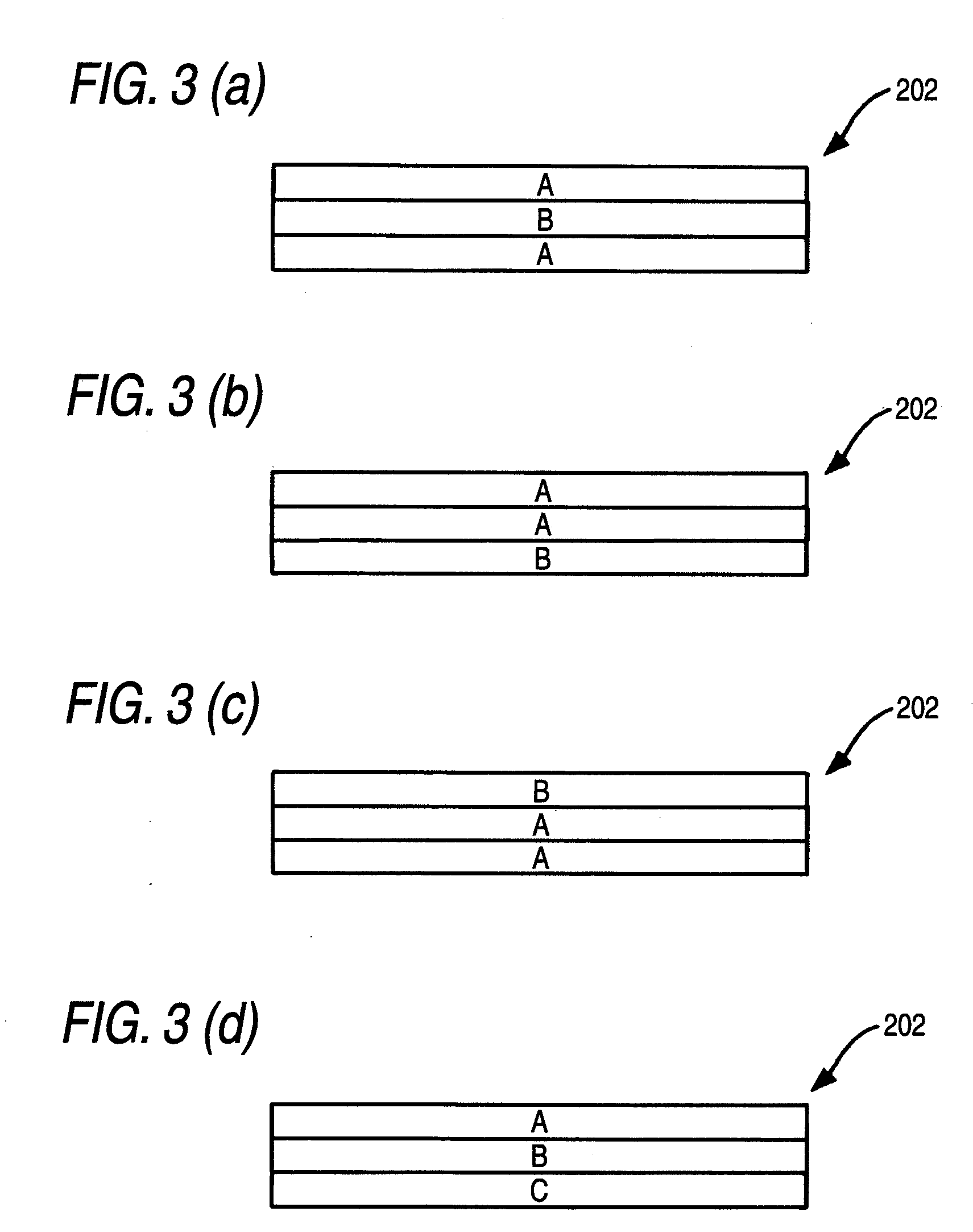Photoelectric conversion element and imaging device
a conversion element and photoelectric technology, applied in the direction of thermoelectric device junction materials, semiconductor devices, electrical apparatus, etc., can solve the problems of low light utilization efficiency, reduced area of the photo diode portion, and reduced aperture ratio, so as to achieve high photoelectric conversion efficiency and low dark current. , the effect of high speed respons
- Summary
- Abstract
- Description
- Claims
- Application Information
AI Technical Summary
Benefits of technology
Problems solved by technology
Method used
Image
Examples
first embodiment
[0171]FIG. 1 is a cross-sectional schematic view showing a constitution of the photoelectric conversion element having the charge blocking layer of this embodiment.
[0172]In FIG. 1, reference numeral 200 designates a photoelectric conversion layer, 202 designates a charge blocking layer of two-layer structure, 202a and 202b designate layers constituting the charge blocking layer 202, and 201 and 204 each designates an electrode.
[0173]For example, when the electrode 204 serves as an electrode on the light incident side, the electrode 204 is preferably constituted by a material having a high transparency since it is necessary to introduce light into the photoelectric conversion layer 200 through the electrode. As an electrode having a high transparency, there is illustrated a transparent conductive oxide (TCO). Also, preferably, the electrode 201 is likewise constituted by a material having a high transparency since, as will be seen in the constitution of the imaging device to be descr...
second embodiment
[0206]In this embodiment, a specific example of a photoelectric conversion element having a charge blocking layer of the plural-layer structure will be described by reference to FIGS. 6 to 11.
[0207]The charge blocking layer includes “a hole blocking layer” which has a large barrier for hole injection from the adjacent electrode and “an electron blocking layer” which has a large barrier for electron injection from the adjacent electrode a high ability of transporting holes which are a carrier of photocurrent. In organic light-emitting elements, a blocking layer using an organic material has already been used in order to prevent penetration of the carrier through a light-emitting layer, as is described in JP-A-11-339966 and JP-A-2002-329582. By sandwiching such organic blocking layer between the electrode and the photoelectric conversion layer in the photoelectric conversion portion, the photoelectric conversion efficiency and the response speed can be improved without reduction of th...
third embodiment
[0241]An example of the constitution of an imaging device using the photoelectric conversion element of the structure shown in FIG. 11 will be described below. In the following descriptions, reference is made to FIGS. 12 to 16. In each drawing, both the hole blocking layer and the electron blocking layer have a plural-layer structure as is the same with the above-described embodiment. However, for drawing convenience, each blocking layer is not drawn as separate plural layers in FIG. 12 to 16.
[0242]FIG. 12 is a cross-sectional schematic view showing one pixel of a solid-state imaging device for illustrating the third embodiment of the invention. FIG. 13 is a cross-sectional schematic view of an intermediate layer shown in FIG. 12. In this solid-state imaging device, a number of pixels shown in FIG. 12 are arranged on the same plane in an array pattern, and data on one pixel of an image data can be generated by a signal obtained from the one pixel.
[0243]One pixel of the solid-state i...
PUM
 Login to View More
Login to View More Abstract
Description
Claims
Application Information
 Login to View More
Login to View More - R&D
- Intellectual Property
- Life Sciences
- Materials
- Tech Scout
- Unparalleled Data Quality
- Higher Quality Content
- 60% Fewer Hallucinations
Browse by: Latest US Patents, China's latest patents, Technical Efficacy Thesaurus, Application Domain, Technology Topic, Popular Technical Reports.
© 2025 PatSnap. All rights reserved.Legal|Privacy policy|Modern Slavery Act Transparency Statement|Sitemap|About US| Contact US: help@patsnap.com



